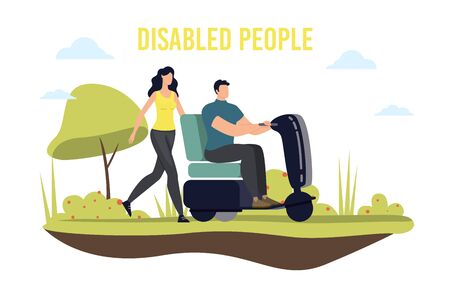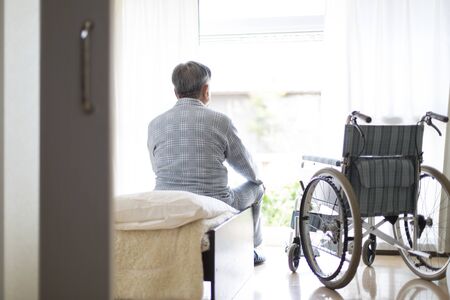Understanding Dementia and Cognitive Decline
Dementia and cognitive decline are common concerns for many seniors and their families in the United States. These conditions affect memory, thinking, and the ability to perform everyday activities. When planning home environments for older adults facing these challenges, it is important to understand what dementia is, its symptoms, and how it impacts daily living.
What Is Dementia?
Dementia is a general term used to describe a decline in mental ability that is severe enough to interfere with daily life. Alzheimer’s disease is the most common type of dementia, but there are other types as well. Cognitive decline can happen gradually and may include trouble remembering things, making decisions, or communicating with others.
Common Symptoms of Dementia and Cognitive Decline
| Symptom | Description |
|---|---|
| Memory Loss | Difficulty remembering recent events, appointments, or familiar faces. |
| Confusion | Getting easily lost or confused about time and place. |
| Poor Judgment | Trouble making safe or sound decisions. |
| Difficulty Communicating | Problems finding words or following conversations. |
| Changes in Mood or Behavior | Anxiety, depression, or sudden mood swings. |
| Trouble Completing Tasks | Challenges with managing finances, cooking, or personal care. |
The Unique Challenges Seniors Face at Home
Seniors with dementia often face difficulties that make living at home more challenging. For example, they might forget to turn off the stove, wander outside without telling anyone, or have trouble recognizing familiar rooms. Everyday tasks like using the bathroom, getting dressed, or preparing meals can become confusing or overwhelming.
Why Inclusive Design Matters
An inclusive approach to home design means creating spaces that support safety, comfort, and independence for seniors with dementia. This could involve simple changes like clearer signs on doors or better lighting to help prevent falls. By understanding the specific needs of people with cognitive decline, families can help loved ones stay at home longer while maintaining their dignity and quality of life.
2. Principles of Inclusive Design
Understanding Inclusive and Universal Design
Inclusive design is about creating spaces that work for everyone, no matter their age or ability. When we talk about making homes comfortable for seniors with dementia or cognitive decline, inclusive and universal design principles help us build environments that are safe, easy to use, and supportive. In American homes, this means thinking ahead to make sure every area is accessible and welcoming.
Key Principles to Follow
| Principle | Description | Examples in Homes |
|---|---|---|
| Safety First | Reduce risks of falls or injuries, especially in areas like bathrooms and kitchens. | Install grab bars, non-slip mats, secure rugs. |
| Easy Navigation | Help residents move around without confusion or obstacles. | Clear pathways, wide doorways, simple floor plans. |
| Accessibility | Make sure spaces and features can be used by people with different abilities. | No-step entries, lever-style door handles, reachable light switches. |
| Sensory Support | Create a calming environment with easy-to-understand cues. | Good lighting, color contrasts for doors/walls, clear signs with words and pictures. |
| Familiarity & Comfort | Design spaces that feel recognizable and reassuring to seniors. | Use family photos, traditional furniture layouts, familiar color schemes. |
| Simplicity | Avoid clutter and complicated designs that might cause confusion. | Minimal décor, labeled drawers/cabinets, organized storage. |
The American Home Setting
In the U.S., many homes have open floor plans or multi-level layouts. Applying inclusive design may involve adding ramps, improving lighting in hallways, or labeling rooms clearly. The goal is to help seniors stay independent for as long as possible while keeping them safe and comfortable. By using these principles, families can create supportive environments that truly feel like home for their loved ones living with dementia or cognitive decline.

3. Home Modifications for Safety and Comfort
Making a home safe and comfortable for seniors with dementia or cognitive decline is all about thoughtful, inclusive design. Small changes can make a big difference in daily life, helping seniors feel more at ease and confident as they move around their home. Here are practical strategies for modifying different areas in the house.
Kitchens
Kitchens can be busy and potentially hazardous, but a few modifications help make them safer and easier to use:
| Modification | How It Helps |
|---|---|
| Install lever-style faucets | Easier to turn on and off, especially for arthritic hands |
| Use appliances with automatic shut-off features | Reduces the risk of fires if someone forgets to turn them off |
| Label drawers and cabinets with large text or pictures | Makes it easier to find items without confusion |
| Remove clutter from counters | Minimizes distractions and reduces fall risks |
| Add non-slip mats near sinks and cooking areas | Prevents slips in areas that may get wet or greasy |
Bathrooms
The bathroom is another key area where safety and comfort need special attention:
| Modification | How It Helps |
|---|---|
| Install grab bars near toilets and inside showers/tubs | Provides extra support when standing up or moving in wet areas |
| Add a raised toilet seat or toilet safety frame | Makes sitting down and standing up easier and safer |
| Use walk-in showers with low thresholds instead of tubs | Easier entry and exit reduces fall risks dramatically |
| Place non-slip mats inside and outside the shower or tub | Reduces the risk of slipping on wet surfaces |
| Keep bathroom items visible and within easy reach (like soap dispensers) | Avoids confusion and minimizes stretching or bending over unnecessarily |
Bedrooms
The bedroom should be a place of rest, but also needs to be safe and easy to navigate:
| Modification | How It Helps |
|---|---|
| Use nightlights or motion-activated lights along pathways to the bed and bathroom | Makes nighttime trips safer by improving visibility without startling bright lights |
| Select beds at an appropriate height (not too high or low) | Makes getting in and out of bed easier |
| Add sturdy bedside tables with rounded edges | Keeps essentials within reach while reducing injury risk from sharp corners |
| Simplify bedding (avoid heavy blankets or lots of pillows) | Makes it easier to adjust covers independently |
| Keep walkways clear of obstacles, cords, or loose rugs | Lowers the risk of tripping or falling during the night |
General Tips for Every Room
- Choose contrasting colors for walls, floors, and furniture so it’s easier to see boundaries.
- Add clear signage on doors (for bathrooms, bedrooms) using both words and symbols.
- Avoid mirrors in hallways or bedrooms if they cause confusion.
Remember: Every Home Is Unique
No two people are alike. Work with your loved one to figure out what changes make them feel most comfortable. These modifications can help foster independence while keeping everyone safer at home.
4. Supporting Independence and Well-Being
Encouraging Daily Routines
Having a predictable daily routine can help seniors with dementia or cognitive decline feel more secure and confident. Familiar activities at set times, such as meals, bathing, and light exercise, make life less confusing. Using visual schedules or checklists can gently guide them through the day.
Sample Daily Routine Table
| Time | Activity | Helpful Tip |
|---|---|---|
| 8:00 AM | Breakfast | Use contrasting tableware to highlight food |
| 9:30 AM | Light Exercise | Short walk or chair stretches in a safe area |
| 11:00 AM | Puzzle/Memory Game | Select simple, familiar games or puzzles |
| 12:00 PM | Lunch | Serve favorite, easy-to-eat foods |
| 2:00 PM | Music Time | Play familiar songs for comfort and joy |
| 6:00 PM | Dinner & Family Chat | Create a calm atmosphere with soft lighting |
| 8:00 PM | Wind-down Routine | Warm bath, reading, or gentle conversation before bed |
Using Memory Aids and Visual Cues
Simple memory aids can be game changers. Large clocks with clear numbers, labeled drawers and cabinets, and color-coded signs around the home help seniors find what they need without frustration. Placing family photos in common areas can also spark positive memories and comfort.
Technology That Supports Independence
User-friendly technology can empower seniors while keeping them safe. Devices like voice-activated assistants (e.g., Amazon Alexa or Google Home) let them set reminders or ask questions hands-free. Medication dispensers that beep at dose time, GPS trackers for wandering prevention, and video calling devices with large screens help maintain safety and connection.
Examples of Supportive Technology for Seniors with Cognitive Challenges
| Type of Technology | Main Benefit | User Tip |
|---|---|---|
| Voice Assistant Speakers | Easy reminders and information | Add daily schedule to device calendar |
| Pill Dispensers with Alerts | No missed medications | Select models with loud alarms and simple refill design |
| Simplified Video Calling Devices | Easier family connections | Add photos to contact buttons for quick recognition |
Cultivating Emotional Well-Being
A supportive environment goes beyond physical design—emotional care matters too. Encourage social visits from friends and family, provide opportunities for hobbies or crafts, and create cozy spaces for relaxation. Celebrating small successes builds confidence. Remember, patience and encouragement go a long way in helping seniors stay engaged and happy at home.
5. Resources and Community Support
When designing homes for seniors with dementia or cognitive decline, it’s important to know that you’re not alone. Across the United States, there are a wide range of resources, support groups, and professionals who can help families and caregivers create safer and more comfortable living environments. Here’s a guide to some key resources available in the U.S.
Local and National Organizations
| Organization | What They Offer | How to Access |
|---|---|---|
| Alzheimer’s Association | 24/7 Helpline, education programs, support groups | alz.org, 1-800-272-3900 |
| AARP | Home modification guides, caregiver resources, local chapters | aarp.org/caregiving |
| Area Agencies on Aging (AAA) | Referrals for local services, home safety assessments | n4a.org |
| Eldercare Locator | Connects families to local support services nationwide | eldercare.acl.gov, 1-800-677-1116 |
| Dementia Friendly America | Community-based support and education initiatives | dfamerica.org |
Support Groups and Peer Networks
Joining a support group can be very helpful for caregivers and families. These groups offer emotional support, tips from others going through similar experiences, and a safe space to share your concerns. Many organizations like the Alzheimer’s Association host both in-person and online meetings. Local hospitals or senior centers often have their own caregiver support programs as well.
Healthcare Professionals Specializing in Dementia Care
- Geriatricians: Doctors specializing in care for older adults, including those with dementia.
- Occupational Therapists: Experts who assess home environments and suggest modifications to improve safety and independence.
- Dementia Care Managers: Professionals who help families navigate care options, coordinate services, and create care plans.
- Home Health Aides: Trained staff who assist with daily living activities at home.
Finding Qualified Professionals:
- Your primary care doctor can provide referrals.
- The Eldercare Locator website helps connect you with specialists in your area.
- Aging Life Care Association (aginglifecare.org) lists certified care managers across the U.S.
Government Programs That Can Help
| Program Name | Description & Benefits | Where to Learn More / Apply |
|---|---|---|
| Medicaid Home & Community-Based Services (HCBS) | Covers home modifications, personal care assistance, respite care in many states. | Your state Medicaid office; medicaid.gov |
| Veterans Affairs (VA) Aid & Attendance Benefit | Financial assistance for veterans needing help at home due to disability or cognitive decline. | va.gov/pension/aid-attendance-housebound/ |
| Supplemental Security Income (SSI) | Certain seniors with disabilities may qualify for monthly payments to help cover living expenses. | ssa.gov/ssi/ |
| Lifeline Program | Lowers cost of phone or internet service for qualifying low-income households. | lifelinesupport.org |
| State Home Modification Grants | Some states offer grants or low-interest loans to adapt homes for accessibility or safety needs. | Your state housing agency or eldercare.acl.gov |
Getting Connected Locally
If you’re unsure where to start, contact your local Area Agency on Aging (AAA) or use the Eldercare Locator. These services will guide you toward the right programs, professionals, and community groups based on your specific needs. Many neighborhoods also have “dementia-friendly” initiatives or memory cafés—safe spaces where people with dementia and their families can socialize and find support together.
Your Next Steps:
- Create a list of your current needs (home modifications, respite care, emotional support).
- Reach out to one of the organizations above to find local resources tailored to your situation.
- Consider joining a support group—either online or in person—for ongoing advice and encouragement from others who understand what you’re going through.
- If you need professional guidance about adapting your home environment, ask your doctor about an occupational therapy referral or contact your AAA for a home safety assessment.
No matter where you live in the U.S., there are people ready to help you make your home safer and more supportive for loved ones with dementia or cognitive challenges.


